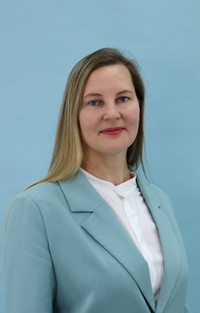Архив журнала
Формирование навыков социального взаимодействия у детей 3–4-го года жизни с расстройствами аутистического спектра
- 980
- Рубрика: КОМПЛЕКСНОЕ СОПРОВОЖДЕНИЕ ДЕТЕЙ РАННЕГО И ДОШКОЛЬНОГО ВОЗРАСТА И ИХ СЕМЕЙ
- Файл статьи: PDF
Аннотация: Статья посвящена проблеме развития у детей с расстройствами аутистического спектра навыков социального взаимодействия с окружающими в раннем и младшем дошкольном возрасте. Дано определение понятию «расстройства аутистического спектра», актуальное на современном этапе. Представлен краткий анализ современных исследований специалистов в области проблемного поля коммуникации и социализации детей с рассматриваемой нозологией. Данный материал является первым в планируемой трилогии статей, посвященных вопросам формирования социально-коммуникативного поведения и средств общения у детей 3–4-го года жизни с расстройствами аутистического спектра. В статье обобщены материалы длительного экспериментального исследования проблем общения и социализации детей раннего и младшего дошкольного возраста с отклонениями в развитии, в котором особое внимание уделяется специфике развития социального взаимодействия и общения детей с нарушениями эмоционально-волевой сферы. Представлена методическая разработка, направленная на формирование у детей навыков, относящихся к различным аспектам социального взаимодействия: социально-ориентировочному, исполнительному, результативному. Коррекционно-развивающее воздействие построено на основе семейно центрированного подхода и проводится специалистами с диадой «ребенок с РАС — мать». В статье указана последовательность применения различных приемов включения детей с расстройствами аутистического спектра в социальное взаимодействие со «своим» и «чужим» взрослыми (мамой и специалистом). Представлены практические примеры реализации данных приемов. Развитие навыков социального взаимодействия у детей данной нозологии должно осуществляться параллельно с повышением уровня их эмоционального реагирования на действия взрослых партнеров по общению и предшествовать логопедической работе по формированию коммуникативного поведения, а также невербальных и речеязыковых средств общения.
Ключевые слова: ранний возраст, расстройства аутистического спектра, РАС, детский аутизм, дети-аутисты, младшие дошкольники, социальное взаимодействие, коммуникативное поведение.
Abstract: The article deals with the issue of the development of social skills of interaction of children with autism spectrum disorders with the surrounding people at the early and junior preschool age. It specifies the definition of the concept of “autism spectrum disorders” relevant at the present stage of pedagogy. The authors present a brief analysis of the modern research of specialists in the field of communication and socialization of children with the nosology in question. This material is included in the first of the planned triad of articles devoted to the formation of socio-communicative behavior and means of communication in children 3-4 years of age with autism spectrum disorders. The article summarizes the materials of a long-term experimental study of the issues of communication and socialization of children at the early and junior preschool age with developmental disabilities, in which special attention is paid to the specificity of the development of social interaction and communication of children with emotional and volitional sphere disorders. The authors present a teacher’s guide in methods aimed at the formation of children's skills related to various aspects of social interaction: socially-oriented, executive, and resul-tative. The rehabilitation-educational intervention is built on the basis of the family-centered approach and is carried out by specialists together with the dyad “child with ASD — mother”. The article depicts the sequence of application of various techniques for including children with autism spectrum disorders in social interaction with “their own” and “alien” adults (mother and specialist). Practical examples of implementation of these techniques are presented. The development of social interaction skills in children of this nosology should be carried out in parallel with improvement of the level of their emotional response to the actions of adult communication partners and should precede logopedic activity on the formation of communicative behavior, as well as non-verbal and speech-language means of communication.
Key words: early age, autism spectrum disorders, ASD, children’s autism, autistic children, junior preschoolers, social interaction, communicative behavior.


